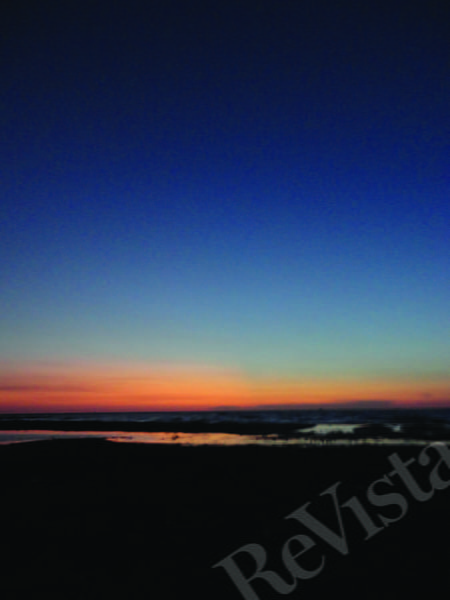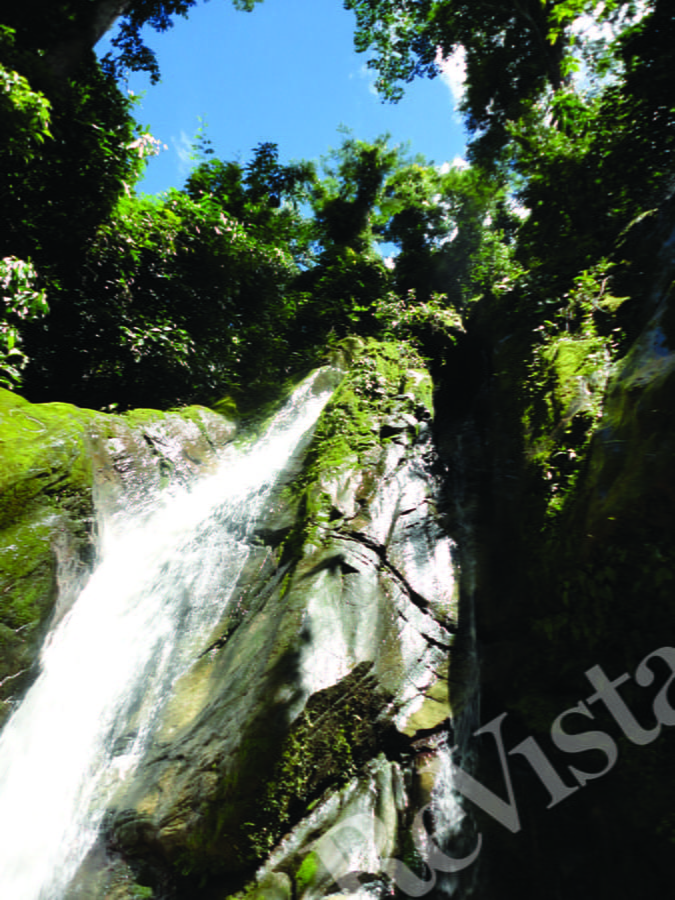The Coolness of Cleansing
Sacred Waters, Medicinal Plants and Ritual Baths of Haiti and Peru
Cleanliness has long served as a form of religious devotion—to be cleansed, purified and sanctified grants one access to sacred spaces and certain ritual experiences. At times, cleanliness may allow one to transcend earthly dimensions, freed from mortal messiness. Religious bathing rites include some combination of consecrated waters, blessed liquids and oils, and medicinal plants (e.g. flower blossoms, herbs and leaves). The practices in Haiti and Peru illustrate the bio-cultural phenomenon of using divine waters and plants in ritual bathing both for those who come in search of deliverance and healing, and for those who seek good fortune and protection.
Sacred baths most often use water, plants, smoke/fire, and mud, comprising all four of the natural elements. There are also “leaf baths,” which involve rubbing leaves, flowers and herbs on the body. Alternatively, one may be cleansed with smoke from burning leaves, embers of charcoal or sanctified wood. Ritual baths may also include submersion in muddy basins, such as Haiti’s Basin Sen Jak mud pits during the Ogou celebrations in July.
Frequently, Afro-Caribbean bathing rites make use of essential oils, perfumes, and liquor. In Haiti in particular, the imbibing of kleren (moonshine) and the application of palmaskriti (castor oil) to the body serve as especially potent cure-alls. These sacred oils and medicinal plants may be used to diminish soreness and enliven lethargy (such as palmaskriti), remove negative energy from one’s path (such as parsley) or establish life’s balance and restore harmony to one’s relationships (in a white bath that often includes white flower petals). Healing ceremonies may include rituals to rid one’s body of disease, to protect children from harm, to sanctify a public space, to repair social relationships within a family, and to honor a community’s elders and recently deceased through funerary rites. Even with such ritual bath diversity, however, without exception, all sacred baths must be accompanied by prayer, intentionality and ritual action.
DIVINE DLO (WATERS) OF HAITIAN HISTORY
There is a place where the river meets the sea in northern Haiti, and where recently ordained Vodou priests and priestesses come to pay tribute to the spirits following their initiation. Known as Gran Salin, the small fishing town arguably receives most income from religious tourism. Haitians and Vodouizan make pilgrimages to Gran Salin for several reasons. Many rivers are considered sacred, but Gran Salin is also a natural site where freshwater and salt water collide, where the denser salt water “sinks” and the freshwater remains “afloat.”
Machann Dessalines, another mythic and revolutionary historical site, features a gròt, a small cave-like fort with a human-made pool, Gròt Dessalines. The cave serves as a devotional site for the Vodou spirits Ezili Freda and Simbi—respectively, a spirit of amorous affection and great wealth and a spirit of rivers, coolness, and healing. Devotees typically come in need of healing and may experience visitation by the spirits, submerging themselves in the healing waters of the sacred pool.
The sacred waterfall of Sodo is one of Haiti’s most widely visited pilgrimage sites by Haitians and foreigners alike for help addressing their physical illnesses, social problems and psychological conditions. Pilgrims, including Vodouizan who mostly trek to the miraculous waterfall, and Catholics who visit the church where the Virgin Mary was said to appear, travel to Sodo for the annual July 15 festival. Then, every stepping stone of the waterfall’s ledges fills with devotees being ritually bathed with sacred waters and plants. They begin by scrubbing with soap in preparation for their “leaf bath,” when a combination of various medicinal plants (particularly basil), possibly accompanied by soap or another lathering agent, will be rubbed on the bodies. After rinsing their bodies in the cool waters, officiating priests and priestesses instruct patients to toss their clothes into the waterfall so that they might cascade down the chutes, taking with them any negativity from the person’s condition. Patients then don fresh clothes as they emerge from the sacred waterfall. The psychological and physiological impact of such an act cannot be understated, as one experiences an ultimate release of a former “unhealthy” or imbalanced, unwhole self.
GREEN CLEANSE: LEAVES OF UPLIFT AND RELEASE
Sacred leaves become especially important with the baptismal rite of lave tèt, literally the washing or cooling of the head as the baptismal stage of initiation in Haitian Vodou. This washing of the head ensures that the devotee’s spirit becomes cleansed and that she begins to cultivate an intimate relationship with ancestral spirits. Later stages of initiation also include extensive bathing rites, usually including water cooler than room temperature. This coolness evokes the soothing application of a gentle pomade or balm. With various ingredients in each bath mixture, the waters may feel sticky or slimy—sweetly- scented or sour-smelling. Most importantly, the small bits of leaves and flower blossom that stick to one’s skin following a ritual bath must never be rinsed or wiped off the skin.
At times, commonplace plants such as basil perform mystic work. With origins in Asia and the Middle East, basil has been used medicinally for nearly 5,000 years for such diverse ailments as sore eyes, diabetes and diarrhea. Hence, it continues to be prescribed by Vodouizan for physical health conditions as well as problems of spiritual imbalance.
PERU’S SERPENTINE MEDICINE & RUSHING WATERS
With a similar attention to the use of plants, the closeness of Peru to the Amazons has fostered a deeply intimate relationship between indigenous nations and the rainforest. Often regarded as a divine being unto herself, the rainforest is considered host to sacred waters and medicinal plants often used in indigenous religious traditions. Ayahuasca (spelled in the Quechua language as ayawaska, with aya meaning “spirit, soul” or “corpse” and waska meaning “rope” or “woody vine, liana”) is perhaps the best known—and possibly the least understood—medicinal plant of the indigenous Americas. Regarded as a sacred medicine by indigenous nations across the Amazon, the spirit of the plant known as Mama Ayahuasca is often depicted as a female serpentine spirit. The hallucinogenic brew comes from a plant mixture of the Banisteriopsis caapi vine and the Psychotria viridis leaf. When conducting healing ceremonies, healers or “shamans” known as curanderos or curanderas prescribe the medicinal plant to perform healing work along with intense tobacco purges and psychedelic visions as ayahuasca restores one’s spiritual energy reserves. Patients may come to ceremony with a wide range of conditions, just as they do in Haiti’s Vodou healing rites.
The curandera begins the first day of the ceremonial week by preparing a brew of mapacho (wild tobacco), often mixed with sap from the lupuna tree as a purgative. The ayahuasca itself, a thick, dark-colored, bitter-tasting brew, may cause vomiting, nausea and diarrhea, considered part of the spirit’s necessary expulsions for ceremony. Such a purge is understood to expel, at times violently, any negative forces in one’s system, physical as well as spiritual. Typically, ayahuasca is administered on the third, fifth and seventh day so as to provide patients time in between ceremonies for their bodies’ rest and restoration. During these “down” times, patients are encouraged to engage in mostly light activity and to spend time in or around bodies of water.
The rainforest’s sacred waterfalls, clear pools and rushing rivers are widely known for their healing properties. During ayahuasca treatments, those who can afford transportation may visit nearby waterfalls or rivers as a soothing, healthful activity. The heavy, pounding streams of waterfalls and the initial shock of a waterfall’s “chill” may be precisely the energizing forces needed to revitalize people experiencing lethargy or listlessness. With the intensity of the water motion, waterfalls sustain biodiversity in their surrounding areas, producing what some scientists call a “vertical wetland.” Waterfalls also tend to be situated in enclaves of clean air spaces, creating a refreshing and energizing place of repose.
BATHS OF CLEANSING, MASKING, AND FLOURISHING
Typically, curanderas may prescribe any one of three ritual baths for ayahuasca healing ceremonies: 1) baño de limpieza, a ritual herbal bath, 2) baño de barro, a mud or clay bath, and 3) baño de florecimiento or baños flores, a flower bath. The first ritual bath, baño de limpieza, is a “cleansing” and purifying bath, often with medicinal plants. This bath often takes place the day before or the day following the first night of ceremony and is designed to dissipate negative energies and unproductive thoughts. Along with the tobacco purge and the first ayahuasca treatment, it is understood that such a bath will help to dislodge any emotional and spiritual imbalances. The second bath usually takes place after the second ceremony, and traditionally involves mud or clay from the rainforest. The uses of clay and mud baths vary between traditions, but researchers agree that clays can serve as anti-inflammatory and detoxifying substances, and that certain natural minerals found in mud can help provide relief from aches and muscle pain. When applied to the body while standing, clay or mud baths cause patients to be still—a chance to cultivate a deep meditative state. Known for their extractive properties, mud and clay baths have been heralded by some curanderos as having the ability to draw out negative energy from patients. When washed off, the thick, hardened clay softens and often feels like the peeling of a layer of skin on the body. Following the stiffness of the mud-pack, patients may feel freer, more limber. Extending the physiological experience to a psychological one, we can imagine the ways that both the body and mind feel more unbound than before.
The third and final bath, “a ritual flowering bath,” is said to attract good luck, wealth and well-being. With a combination of potent, fragrant blossoms, it greatly resembles the “white baths” of Afro-Atlantic traditions. Much like Vodou spiritual elders, the Peruvian curanderas instruct new initiates to leave the remains of their ritual baths on their bodies, so too do Peruvian ayahuasca curanderas. While the sticky blossoms and herbs remain on the skin, they continue to bring good luck and positive energy until they naturally fall off of their own accord.
Often, baños de limpieza come first and baños flores at the end of the retreat, though patients undergoing more extensive spiritual work who do the plant diet may be prescribed flower baths more frequently. The curandera will decide what baths are most necessary for a patient’s condition. Similarly to how sage smoke clears and removes negative energy, the baño de limpieza serves as a total, initial cleansing. The baño de florecimiento then acts as the sweet-smelling smoke that should follow a ritual clearing to usher in uplifting energies of positivity and prosperity. In ayahuasca traditions, ritual baths open communication between people and the plantas maestras (master plants, or spirits of the plants), so that devotees may pursue their own healing and spiritual growth. Again, we see an interesting counterpart of Vodou’s lave tèt bathing ritual as a gateway for devotees to receive messages with greater clarity from the spirits.
COOLNESS AND CLARITY
Even though Haitian and Peruvian ritual bathing traditions demonstrate many differences, we note several important themes of similarity: cleanses that involve moving (not stagnant) sacred waters; the application, and at times ingestion, of medicinal plants and flowers; and the act of being bathed by a spiritual elder to cultivate greater intimacy in relationships with ancestral energies and the spirits.
Among the biological properties of ritual bath ingredients, the healing properties of water (saline and mineral), earth (the medicinal plants and flower blossoms), as well as fire and air (clarifying smoke and sweat lodges), must not be understated. Indeed, as botanists and religion scholars, as devotees and chemists, as cultural insiders and religious outsiders, we would do well to pool our collective knowledge about the healing properties of ritual baths. This would allow us to gain a fuller understanding about Africana and Amazonian bodies of knowledge regarding the natural world and consider multiple cultural approaches to health and wellness. As art historian Robert Farris Thompson said, “…coolness has to do with transcendental balance.” In this sense, ritual baths do far more than cleanse the body—they heal the psyche and energize the spirit as well.
Fall 2016, Volume XVI, Number 1
Kyrah Malika Daniels is a Ph.D. candidate in African & African American Studies, and received her MA in Religion at Harvard in 2013. Her dissertation focuses on sacred arts and religious healing in Haiti and the Democratic Republic of Congo. Her work has been published in the Journal of Africana Religions and the Journal of Haitian Studies.
Related Articles
A Ditadura Acabada
The timing of the publication of the fifth and final volume of Elio Gaspari’s monumental history of the Brazilian military regime could not be more relevant. It is ironic that his new…
Spinning Mambo into Salsa: Caribbean Dance in Global Commerce
At a fancy yet packed bar in Tokyo’s most cosmopolitan district; at the patio of a bar in Vancouver facing the Canadian Rockies; at a hotel lounge bar overlooking the skyline of…
Teaching and Learning for the Twenty-First Century
In Teaching and Learning for the Twenty-First Century. Educational Goals, Policies and Curricula from Six Nations, Fernando Reimers and Connie K. Chung examine some policy issues in…











